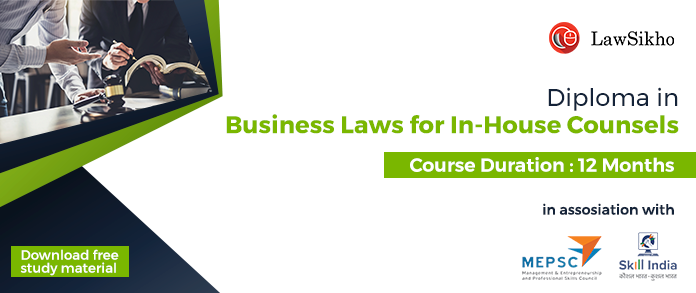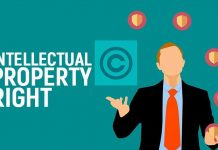This article is authored by Akash Krishnan, a law student from ICFAI Law School Hyderabad. It discusses the scope of copyright, different kinds of works protected under copyright, author and ownership of copyright and some notable examples in this domain.
This article has been published by Sneha Mahawar.
Table of Contents
Introduction
Copyright means the exclusive right to do or authorize others to do certain acts like reproducing, making and issuing of copies, performing in public, communicating to public, adaptation and translation in relation to literary, dramatic, musical, artistic, cinematograph films and sound recordings works. Copyright is the right which the owner of the work has and without his permission copying or reproducing the work in which copyright subsists cannot be done. Copyright law prevents others from taking unfair advantage of a person’s creative efforts involving his judgment, skill, labour, time, and capital in making the original work. The objective of copyright law is to give protection to the creators of original works by rewarding them with the exclusive right for a certain period.
Copyright protects literary, dramatic, musical, artistic, cinematograph films and sound recordings. Literary works include novels, stories, poems, dramas or any other writings, whatever may be the purpose or form. Dramatic works include recitation, entertainment in dumb shows, scenic arrangement, dance, mime, operas, ballet, screenplays, choreography, script etc, but not a cinematograph film or movie as a whole. Musical works include music and include any graphical notation, choruses etc. Artistic works include drawings, paintings, lithographs, diagrams, maps, charts or plans, photographs, sculptures, architectural works, works of artistic craftsmanship etc. Cinematographic works or motion pictures consist of works of visual recording without sound or with a soundtrack including video films. Sound recording is the recording of sounds, from which such sounds may be produced in any medium.
Examples of copyrighted works
- Literary works – Books, novels, stories, computer program codes etc.
- Musical works – Music, choruses etc.
- Artistic works – Paintings, photographs,cartoons (Mickey Mouse, Tom and Jerry), drawings etc.
- Dramatic works – Dance steps, screenplays, operas etc.
- Cinematograph films – Movies, video films etc.
- Sound recordings – Any recording of sounds, recording of songs by sound recorders etc.
Characteristic features of Copyright
The main essential characteristic features of copyright are:
- Originality
- Expression in some form
- Bundle of rights
Originality
To have copyright, work must be original. This means literary, dramatic, musical, artistic, cinematographic film and sound recordings must be created by the author’s intellect by employing his skill, judgment, labour, time or capital and they must not be copied.
Expression in some form
Copyright protection is given only when the created work is expressed or fixed in manual or electronic or in some tangible form. A mere idea is not capable of protection under copyright.
Bundle of rights
The term copyright includes a number of rights. The creator or author of the works will have a bundle of rights in his creation. For example, Ms. J. K. Rowling who is the author of the famous novel Harry Potter has multiple rights like the right of reproduction, right to issue copies, right to perform or communicate the work in public, right to make a film, right to translate, etc.
Works protected under International Conventions
Berne Convention,1886
The Berne Convention protects literary and artistic works. The relevant provisions of the convention have been enumerated below:
Article 2: Works Protected under the Convention
- Literary and artistic works
- Countries may mandate that the work will be protected only if it is fixed in material form.
- Derivative works: Translations, adaptations, arrangement of music and alterations of literary and artistic works.
- Countries may make laws to protect official texts: legislative, administrative or legal texts.
- Collection of literary or artistic work: encyclopaedia, dictionaries
- Work to be protected in all countries. Beneficiaries of protection are the authors and their successors or people to whom the title is transferred.
- Countries may determine the extent of protection of applied arts and industrial designs. If work is protected as design and model in one country, the same shall be protected in other countries in accordance with the protection that country offers for designs and models. If there is no provision for the same in the other country, work is protected as an artistic work.
- No protections to daily news and mere facts stated by the press.
Article 2(bis): Limitation for protection of certain works
- Countries may exclude protection to political speeches or speeches delivered in the course of legal proceedings.
- Countries may make laws for the reproduction of lectures/addresses given in public by press/broadcast etc.
- The author has the right to maintain a collection of his lectures/speeches etc.
Article 4: Cinematographic and artistic works
- Protection of Cinematographic Works: if the maker of work has his headquarters or habitual residence in the member country.
- Protection of Works of Architecture and Certain Artistic Works: if the building or artistic work incorporated in the building is in a member country.
Article 7: Term of Protection
- Life of Author + 50 years after the death
- Cinematographic works: 50 years from the date of publication/date of making
- Anonymous/Pseudonymous works: 50 years from the date of publication. If identity is revealed, then the general rule will apply. No protection if a reasonable conclusion can be drawn that the author is dead for more than 50 years.
- Photographic and applied art: 25 years from the date of making
Agreement on Trade-Related Aspects of Intellectual Property Rights, 1995
The TRIPS Agreement was enacted for creating an international instrument solely dedicated to the protection of Copyright. The relevant provisions of the convention are enumerated below:
Article 9: Relation to Berne Convention
Copyright protection is available on the expression of ideas and not the idea itself.
Article 10: Computer Programs and Compilations of Data
- Source/Object Code: to be protected as literary work under Berne Convention.
- Compilations of data or other material that possess intellectual character due to the manner of selection or arrangement are protected.
Article 12: Term of Protection
The term of protection shall be 50 years, starting from one year after the date of publication or making of the work.
WIPO Copyright Treaty, 1996
The WCT followed the principles prescribed under TRIPS and was enacted to ensure copyright protection in the digital regime. The relevant provisions of the Convention have been enumerated below.
Article 4: Computer programs
Computer programs are protected as literary works within the meaning of Article 2 of the Berne Convention.
Article 5: Compilations of data (databases)
Compilations of data or other material that possess intellectual character due to the manner of selection or arrangement are protected.
Article 9: Term of protection
The term of protection shall be at least 50 years from the date of publication for any kind of work.
Works protected under Indian Copyright Act, 1957
The Indian Copyright Act 1957 has incorporated several works within its ambit that have been given protection under the aforesaid conventions. The relevant provisions of the Act have been enumerated below:
| Section | Protected Work |
| Section 2(o) | Literary work: It includes computer programs, tables and compilations including computer databases. This definition is not exhaustive. |
| Section 2(n) | Lecture: It includes speeches, sermons, public addresses, etc. |
| Section 2(ffc) | Computer program: It includes the source and object code of the program |
| Section 2(h) | Dramatic work: It includes public/private recitations, works of choreography, acting, etc. |
| Section 2(p) | Musical work: It includes works of music, graphical notations of music, etc. It does not include words or any movements associated with the music. |
| Section 2(c) | Artistic works: It includes paintings, sculptures, engravings, architecture works, works of artistic craftsmanship, etc. |
| Section 2(s) | Photographic works: It includes all forms of photographs except those included as a part of a cinematographic film. |
| Section 2(a) | Adaptation: It includes conversion of any form of work into another i.e., conversion of literary work into a dramatic work etc. |
Notable examples
Ideas, plots or themes
It is pertinent to note that under copyright law only the expression of an idea is protected and not the idea itself. Similarly, if a plot/theme is similar across multiple platforms, it is not protected. However, the manner in which these plots or themes are expressed will be protected. In Barbara Taylor Bradford vs. Sahara Media Entertainment Ltd (2003), Plaintiff sought a copyright infringement suit against Defendant for copying her novel about a woman who rose from poverty to richness into a TV serial and broadcasting the same without her consent. It was held that copyright is only available for the expression of ideas and not the idea itself. No person can have a monopoly over an idea. If the manner of expression of the ideas i.e., the details, events, situations etc was depicted in the same manner in the TV serial as in the book, a case for copyright infringement could be made.
Concept Note
Concept notes can be defined as the underlying concept of a show. For example, in the reality TV show Big Boss, the concept is that several contestants have to live together in an enclosed space for a period of 4 months and perform a variety of tasks for winning the show. Now the question is whether this concept can be protected or not?
In Anil Gupta vs. Kunal Dasgupta (2002), Plaintiff came up with the concept of a reality TV matchmaking show where celebrities could find their ideal matches for marriage. He discussed the show with Defendant for launching it and sent him the concept note along with all other details. Defendant launched his own reality TV matchmaking show based on the concept note supplied by Plaintiff. It was held that an idea has no copyright and only the expression of an idea is copyrightable. Thus, there is no copyright available over the concept of a show. In case a concept is developed along with other attributes like cast, scenes, tasks, dialogues etc., then the same can be subject to copyright protection.
In Zee Telefilms Ltd. And Others. vs. Sundial Communications Pvt. Ltd (2003), the TV serial developed by the Plaintiff about the early life of Lord Krishna (Krishna Kanhaiya) was copied in the TV serial developed by Defendant (Kanhaiya). It was held that since Defendant had copied the way in which the idea was expressed by Plaintiff in their show and the scenes, background, storyline etc. were substantially similar to that of the Plaintiff, there is a copyright violation.
Computer database
A computer database is included within the definition of literary work under the Copyright Act. In Burlington Home Shopping Pvt. Ltd. vs. Rajnish Chibber & Another (1995), it was held that compilation of a list of clients/customers developed by a person by devoting time, money, labour and skill amounts to a literary work wherein the author has a copyright. Also, in Express Newspaper Plc. vs. Liverpool Daily Post & Echo Plc (1985)., it was held that output from a computer that has been randomly generated by the machine itself can be protected under copyright law.
Graphic characters
Graphic characters can be defined as any character represented graphically by way of drawings, sketches, paintings, etc. For example, drawings of Spiderman, Superman, etc. In Reckitt and Colman Ltd vs. Borden Inc (1990), two characters that were made and used by Plaintiff in his works were copied by Defendant. It was held that copyright exists in graphic characters and the act of Defendant amounts to copyright infringement. In Walt Disney vs. Air Pirates (1978), a two-step test was devised to determine copyright infringement in graphical characters, i.e., visual similarity and similarity in character attributes like name, appearance, outfit etc.
Abridgement
Abridgement can be defined as reducing a large work into a small piece of work by preserving the sense and meaning of the entire work.
In Macmillan and Company Ltd. vs. K. & J. Cooper (1923), the Appellants published an abridged edition of a book taking paras from the book and included an introduction, transitional notes, marginal notes, etc. The Respondents also published an abridgement of the book taking paras from the book and included all notes added by the Appellant in their version. It was held that there is no copyright over the verbatim used by the Appellants in their abridged version as they just copied the same from the original book and did not spend sufficient knowledge, labour, judgment, or literary skill upon it. However, copyright is available for all marginal notes, transitional notes, etc that were added by the Appellants as it demonstrates the use of labour and skill for creating the work and it is their original creation.
In Sweet vs. Benning (1855), the Plaintiffs were the proprietors of a weekly paper called “The Jurist” that published the decisions of various courts of law along with appropriate marginal notes and headnotes. It was held that there is no copyright available over the parts of the judgment that were reproduced but copyright is available over headnotes, marginal notes, etc.
Author and owner of the copyright
Section 17 of the Copyright Act deals with authorship and ownership over copyright. Section 2(d) of the Copyright Act defines who is the author with regard to different works. Section 17 of the Act states that the author of the work is the first owner of the copyright in that work. The ownership of the work is subject to certain exceptions. The exceptions are as follows:
If the literary, dramatic or artistic work is made by the author in the course of his employment under a contract of service or apprenticeship
In this case, the first copyright owner of the work is the proprietor of that newspaper, magazine or a periodical under which the original author is working, if there is no other contract to the contrary in relation to the publication of the work in any newspaper, magazine or periodical or to the reproduction of the work for the purpose of being so published. In Indian Performing Rights Society vs. Eastern India Motion Pictures Association & Others (1977), it was held that if the author is employed under a contract of service for reward, the employer will become the owner of the work.
Photograph, painting etc. made for valuable consideration
In case of a photograph, a painting, a portrait, an engraving or a cinematograph film that is made for valuable consideration at the instance of any person, such person, at whose instance these works are made in the absence of any agreement to the contrary, shall be the first owner of the copyright of those works.
Work made in the course of employment
Where a work is made in the course of the author’s employment under the contract of service or apprenticeship, the employer not being the proprietor of a newspaper, magazine, or periodical, in absence of a contract to the contrary, the employer will be the first owner of the copyright in the work that is created. In Indian Performing Rights Society vs. Eastern Indian Motion Pictures Ltd (1977) the Hon’ble Supreme Court while interpreting Section 17(c) of the Act stated that the proprietor becomes the absolute owner in cases of a contract of service for valuable consideration unless there is an agreement contrary to it. In Salim Khan & Others vs. Sumeet Prakash Hers Mehra & Others (2013), it was held that if the producer of the film hires a lyricist for a valuable consideration to compose lyrics to include in his film, the producer becomes the first owner of the copyright of the lyrics if there is no separate contract.
Lectures delivered in public on behalf of any other person
Where any person has delivered any address or speech in public, that person will be the first owner of the copyright. If the address or speech is delivered on behalf of any other person, such other person on behalf of whom it is made will be the owner of the copyright of the address or speech.
Government work
In the case of the Government work, the Government is the owner of the copyright in the absence of an agreement to the contrary between the creator and the Government. In B.N. Firos vs. The State of Kerala (2018), the Hon’ble Supreme Court of India while interpreting Section 70 of the Information Technology Act, 2000 and Section 2(k) and Section 17 of the Copyright Act 1957 held that only government works under the Copyright Act qualify as protected systems under Information Technology Act, 2000.
Work made on behalf of a public undertaking
In case the work is made or first published by or under the direction or control of any public undertaking, such public undertaking shall in the absence of any agreement to the contrary, be the first owner of the copyright of that work.
Work of certain International Organizations
When work is considered to be a work of a certain international organization under Section 41, then that international organization shall be the first owner of the copyright of such work.
Conclusion
Copyright laws have evolved over time and have incorporated new elements under its wing of protection. The evolution that started with the enactment of the Statute of Anne wherein only literary works were protected has grown into a multi-dimensional protective regime where even modern-day computer-generated works are being protected. The three important principles governing the protection of copyright works across the globe were laid down under the Berne Convention. The principles are:
- National treatment: The work of any copyright owner published in any member state will have the same protection in other member states.
- Automatic protection: Automatic and unconditional protection in member countries.
- Independence of protection: Protection of work in member countries is independent of the existence of protection of workers in the country where the work was first published.
With these three principles in place, copyright protection is assured across all the member countries. Only time will tell whether or not these principles will remain efficient and whether or not new elements would be brought under the ambit of copyright protection.
References
- https://law.moj.gov.tw/ENG/LawClass/LawAll.aspx?pcode=J0070017
- https://copyright.gov.in/Documents/Manuals/LITERARY_MANUAL.pdf
- https://www.legalserviceindia.com/copyright/copyright-literary-book-lyrics-screenplay.htm
- https://www.newmediarights.org/business_models/artist/what_types_things_are_protected_copyright
- https://corpbiz.io/learning/type-of-works-protected-by-copyright-in-india/
Students of Lawsikho courses regularly produce writing assignments and work on practical exercises as a part of their coursework and develop themselves in real-life practical skills.
LawSikho has created a telegram group for exchanging legal knowledge, referrals, and various opportunities. You can click on this link and join:
https://t.me/joinchat/L9vr7LmS9pJjYTQ9
Follow us on Instagram and subscribe to our YouTube channel for more amazing legal content.
 Serato DJ Crack 2025Serato DJ PRO Crack
Serato DJ Crack 2025Serato DJ PRO Crack











 Allow notifications
Allow notifications



